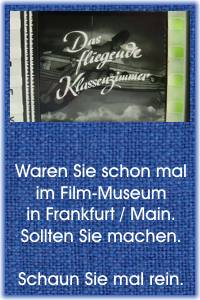Die Poulsen Erfindung sei Unsinn ?
U.S. Patent Office officials at first said of the steel-wire-wrapped, stationary brass-cylinder magnetic recorder (40-seconds duration) of Valdemar Poulsen (1869-1942) that the "alleged invention is contrary to the well established and universally recognized principles of electricity and magnetism,..."
After several letters from reliable officials (e.g. Dr. C. W. Stiles, Scientific Attache at the U.S. Embassy in Berlin), his original application was divided, with only three Claims allowed for his first patent - on the Method. The remainder of the application (43 Claims for the Apparatus) did not issue until May 29, 1906 (822,222); both patents had to be "validated" by a Feb. 19, 1903 act of Congress as the U.S. application was filed a week past the 7 months allowed after the Danish grant and the Patent Office had missed the error.
Das Oberlin Smith Patent
A mechanical method of electro-magnetic recording and playback had been anticipated by Edison's Caveat of Mar. 8, 1878 and a truly magnetic system was first conceived by Oberlin Smith of Bridgeton, NJ, in a memorandum dated Sept. 24, 1878, which was filed with the Cumberland County Clerk in NJ. However, when Smith submitted his official Caveat in Washington, DC on October 1-4, 1878, he "accidentally" omitted his reference to tempered steel wire magnetized in zones, and substituted a non-magnetic filament interspersed with magnetic fragments; years later, in 1921/22, Smith also invented a remote record changer with 50 discs (the Autofono, 1,573,504).
Das Wilhelm Hedick Patent
Some work with magnetic recording was done in 1887 in Germany, Holland and France by Wilhelm Hedick (Ger. pat. 42.471 & Brit. pat. 569/88), and Paul Janet.
Die Stimme von Kaiser Franz Joseph
Poulsen's device, originally designed for telephonic recording, was successfully exhibited at the 1900 Paris Exposition with models manufactured by Mix & Genest (wire diameter of 1/50 ) and captured the voice of Emperor Franz Joseph on Sept. 20 (the oldest surviving magnetic recording), but the American Telegraphone Co., formed by Stilson Hutchins (an 1887 Graphophone supporter) in November 1903 to exploit Poulsen's patents, was a commercial failure; vacuum-tube amplifiers were not yet invented and the high-speed (.01" dia.) wire-spools became entangled at 84"/sec. and could not be more swiftly rewound, while the 5.15" discs (constant linear speed) were expensive and of limited capacity.
Das L. F. Fuller Patent
D-C biasing was accomplished by Poulsen and Pedersen in their 873,083 (they ceased their work after 1902), but AC high-frequency bias recording was not invented until 1918 by L. F. Fuller (1,459,202), and in 1921 by W. L. Carlson and G. W. Carpenter of the US Naval Research Laboratory for signal transmission only (1,640,881).
The device had also been developed to include high-speed telegraphic recording by Patrick B. Delany. However, there were rumors of hostility from dictation-phonograph interests and the company did not flourish under President Charles D. Rood (after July 1908), against whom charges of deliberate non-development and treason were made on Mar. 10, 1932; the occasion was a failed legislative attempt by 16,000 AmTelegCo. shareholders to extend G. S. Tiffany's assigned (1909/1915) taut-wire improvement, 1,142,384, by eight years (S. 1301).
Der Erfolg kam sehr spät.
Poulsen's Brit. pat. 8961 also failed of extension - - in 1913. In addition, NY telephone officials had somehow ascertained that one-third of their serviced conversations were illicit in some way and revenue would correspondingly decline if these customers feared the preservation of their words; not till 1948 did limited telephone-recording attachments become legal in the U.S. Even the prominent display of a steel-tape model, with the voice of Wm. J. Bryan, at the (California) Panama-Pacific Exposition in 1915 did not ignite sales.
A loud-speaking disc Telegraphone was finally developed in 1920 by Max Kohl AG of Chemnitz, the founder of which had constructed Edison tin foil phonographs in 1878; an outdoor model (with rail-embedded signals for locomotives) was built around 1921 by A. Nasarischwily. The author of a later (1949) study of magnetic recording, Semi J. Begun, invented a more commercially successful model with removable magazines called the Dailygraph in 1929.
For connections to sound-on-film, see comments at Gaumont's pat. 752,394. Poulsen's attorney, Wm. A. Rosenbaum, who was apparently responsible for the original late filing, managed to obtain a telegraphone patent himself (720,621) and later became the Secretary of the American Telegraphone Co. (the company's assets were sold off in 1936). Cf. also M. Camras' later series 2,351,003-011, some of whose voice-recording work was anticipated by Nagai, Sasaki and Endo in 1938 (Jap. pat. 136,997).
...... haben wir im Fernsehmuseum aufbereitet. Damit werden viele Legenden, Storys und auch viele unwahre Berichte relativiert.
.

